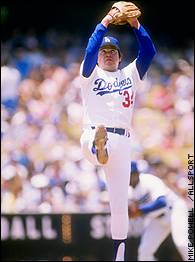My son had a frustrating bullpen last night. He had a tough time finding the zone. He had a couple of dads telling him certain things to try, mechanically, but was still frustrated. My thought afterward was, was he truly focusing on the target through his entire motion? A question to you knowledgeable folks out there - Are instructors and coaches focusing too much on mechanics and not enough on really dialing in your eyes on the target throughout the zone until the ball impacts the mitt, target, etc.? If a kid has good mechanics, will he be able to allow his body to go into automatic if he simply locks his eyes on the target and thinks of only that - similar to a computer guided missle system - brain is the computer, eyes are the laser guided system and the arm is the launcher. Where the eyes go, the ball goes. Am I on the right track here?
Original Post



